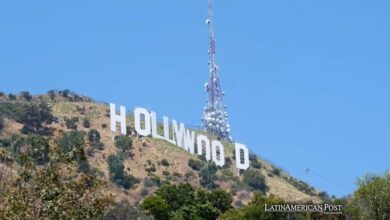What’s so Special About Summer Blockbuster?
Between the last weeks of May and the first weeks of August, the big studios release some of their most important (and expensive) films, in a fight for the market. Here, we explain what is behind the concept of the “summer blockbuster”.

Photos: Film Affinity
LatinAmerican Post | Juan Andrés Rodríguez
Listen to this article
Leer en español: ¿Qué tienen de especial las películas del verano? El fenómeno del “summer blockbuster” explicado
July 21 is one of the most anticipated days for movie fans worldwide. After a year, two of the most anticipated films will hit theaters in a curious confrontation for number one at the box office: “Barbie” by Greta Gerwig vs., “Oppenheimer” by Christopher Nolan. A third party wants to be added to this contention because it has been reported that Tom Cruise is seeking to convince exhibitors and studio executives not to release "Mission Impossible 7. Part One", which opens ten days earlier, from premium theaters and IMAX that they are going to give priority to their competition.
This situation (and bold move for free advertising) perfectly captures the essence of the summer movie season, or “summer blockbusters”. This is a name curiously derived from a type of bomb used in the 1940s with the ability to destroy entire buildings. During the golden age of Hollywood, it was adopted by the press to describe large-scale productions. But it was in the 70s that the term acquired its current connotation, with which the film transcends its conception as a product and becomes the axis of cinema as an entertainment experience.
Several articles have been published on how "Barbie" caused an international pink paint shortage, how Cruise rides a motorcycle over a cliff for "MI7" and how Nolan recreated explosions for the nuclear blast sequence in "Oppenheimer." All this refers to a fundamental characteristic of summer films: their purpose as a visual spectacle becomes a catalyst for bets on technical and technological advances for staging. In addition, the studies take advantage of the myth of “production follies” to create expectations.
That's just one of the many things brought to the Hollywood scene by the film classified as the first "summer blockbuster": Steven Spielberg's “Jaws” (1975). The simple premise of a town stalked by a great white shark in the middle of summer morphed into a bid by Universal Studios to revolutionize the industry by financing the first movie filmed in the ocean and allocating a huge budget to marketing with prime-time commercials in television and merchandise of all kinds. Since its premiere, it became a cultural phenomenon that transformed audiences' perception of summer activities and cinema as an alternative to escape the heat in an air-conditioned room.
The success of the film presented a business model focused on the exploitation of intellectual property (IP), which two years later would demonstrate its full potential with a trip to a galaxy far, far away. In 1977, George Lucas presented to the world the first chapter (later titled as the fourth episode) of the story of the Skywalkers. Advances in visual effects coupled with its iconic production design made "Star Wars" the entertainment event of the year and laid the foundations for the modern franchise model, expanding the universe of film in books, comics, and massive success on television and sale of action figures. It was release in the last week of May, inaugurated the association of this date as the start of the summer movie season.
Also read: Beyond Spider-Man: 5 Animated Movies That Changed Movie History
Over the decades, this form of production and promotion has consolidated patterns that have come to be established as "customs" of Western entertainment culture. From the expectation and presentation of the first trailer at events like the Super Bowl or Comic-Con, to the long lines of fans on opening night, everything is a process that makes the film an event that transcends the hour and a half or two hours of its duration. They are months or years of expectation that sometimes lead to the cost of advertising being almost equal to that of production.
It is interesting to show the mechanisms for the sense of identity or the need for various audiences based on consumption. "Barbie" points to the nostalgia of the public that grew up with the doll, the parents' search for ways to distract their children in the middle of the holidays and even cinephilia by highlighting the direction of Greta Gerwig. Like this one, hundreds of cases can be studied that show how ingenious the studies are for people to appropriate the idea that watching the movie is a fundamental experience for their lives.
But this does not mean that the appropriation of the film and what it represents is something negative. The summer movie tradition encapsulates the idea of cinema as a social articulatory. In the phrase "let's go to the movies" a whole series of moments are linked that, despite the divided opinions about the quality of the film, pass into the background in the memories of sharing and getting to know better those who accept the invitation, from the laughter, tears, and screams of emotion.
Given the discontent and concern of many members of the industry at the decline of movie theaters amid the increase in popularity of streaming, summer movies are the last bastion that resists.




